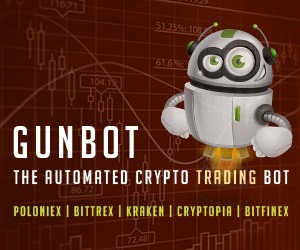However, Litecoin uses a different blockchain, which allows it to have a faster transaction or transfer speed. Litecoin uses an open source software to create and transfer coins, and is decentralized.
Since Litecoin hit the market, its growth has been pretty astounding. According to Forbes , Litecoin hit its peak in December of 2017, sitting at $360.93. At just $4.40 a year before, Litecoin saw an 8200% increase.
Like most cryptocurrencies, the future of Litecoin is very much in question, but these digital “coins” are starting to become more widely accepted as payment.
As of the writing of this article, one Litecoin is worth about $51 U.S. dollars (or, 1 LTC is worth $51 USD).
What Is Bitcoin?
Bitcoin , to many, is the original cryptocurrency that has (thus far) maintained its status as the most popular.
Created in 2009 by an unknown individual going by the alias Satoshi Nakamoto, Bitcoin was designed as an alternative currency that used blockchain technology to supposedly increase safety in financial transactions throughout the network.
Bitcoin essentially pioneered the cryptocurrency industry by allowing Bitcoin miners to mine and add coins to the public blockchain network. Bitcoin can also now be bought through exchanges, much like a stock can be purchased through the Dow Jones Industrial Average (DOW Get Dow, Inc. Report or the S&P 500undefined . So, while Bitcoin is essentially a currency, it also kind of operates as a stock (so it’s a mixture of a lot of things).
As of the writing of this article, one Bitcoin is worth about $6,400 U.S. dollars (or, 1 BTC is worth $6,400 USD).
Litecoin vs. Bitcoin: What’s the Difference?
So, both Litecoin and Bitcoin are cryptocurrencies that share a similar basic structure and rely on crypto networks, but what are the differences between the two? And how do you buy them?
Algorithm and Mining
One of the principle differences between Litecoin and Bitcoin are their different cryptographic proof-of-work algorithms.
Bitcoin uses a traditional SHA-256 algorithm, while Litecoin uses an algorithm known as Scrypt. The way these two algorithms affect the difference between Litecoin and Bitcoin is based off of is the speed by which they are able to mine respective coins.
Litecoin’s algorithm is designed to produce about four times as many coins as Bitcoin does – producing one coin every 2.5 minutes (whereas Bitcoin produces one every 10 minutes). So, the speed of acquisition is really the main difference.
However, both Litecoin and Bitcoin use algorithms that use computing power to process transactions, which is accomplished by “miners” confirming transactions in their networks with their computing power and receiving coins in exchange. But the speed at which these transactions occur is very different for the respective Litecoin and Bitcoin algorithms.
Bitcoin’s SHA-256 algorithm, famous for being very complex, has been altered over the years by miners, and commonly uses what are called Application-Specific Integrated Circuits (ASICs) – hardware systems that can be customized for mining Bitcoin. For this reason, Bitcoin’s algorithm stresses processing power. However, one critique of Bitcoin’s algorithm has been that it is increasingly becoming more difficult for regular users to mine Bitcoin due to its complexity.
On the other hand, Scrypt, which is used by Litecoin, is generally a more efficient algorithm for mining cryptocurrency due to how it is designed to prevent too much customization with hardware solutions like ASICs. Scrypt, unlike SHA-256, favors high-speed random access memory. For this reason, Litecoin’s algorithm makes it easier for regular cryptocurrency users to participate in mining without too much complexity.
Because Scrypt allows regular miners often using CPUs (central processing units) or GPUs (graphics processing units), Litecoin is typically a more easily accessible way to mine coins than Bitcoin.
Market Capitalization
Bitcoin’s market cap sits at around $109 billion as of late 2018, while Litecoin comes in shy of around $3.05 billion as of 2018 .
Still, Bitcoin’s astronomical rise is pretty evident in its market capitalization alone – in 2010, Bitcoin’s market cap was only $42,000. And while this figure has fluctuated over the years, alternative currencies like Litecoin are certainly gaining on the crypto-giant.
Transaction Processing
Transactions take a long time to be confirmed on blockchain network members – for both Bitcoin and Litecoin. As of recent estimates by Blockchain.info , Bitcoin transactions can be confirmed about once every 10 or 11 minutes – fluctuating at high-volume times. So, one block is mined about every 10 minutes.
However, Litecoin transaction processing is much faster than Bitcoin’s – processing a transaction confirmation about once every 2.5 minutes. It is because of this dramatic difference in speed that has made Litecoin an appealing option for businesses using altcoins because they don’t have to wait as long for their transactions to process.
Total Coins
Additionally, another integral difference between Bitcoin and Litecoin are their total coins. Essentially, Bitcoin and Litecoin can only produce a certain amount of coins. Bitcoin can produce a total of 21 million coins in its network. Litecoin, however, can produce up to 84 million coins. But, while it may seem that Litecoin has the upper hand for potential, Bitcoin (and Litecoin) can be divided and transferred at tiny amounts – the minimum for Bitcoin being one hundred-millionth, or 0.00000001 Bitcoins (called “satoshi” in the crypto community).
Because both cryptocurrencies are able to be divided down so much, the cost of one full coin of either is less consequential than it may seem.
Still, some like IBM (IBM Get International Business Machines (IBM) Report executive Richard Brown have claimed in the past that users may eventually want to trade in whole coins, which, considering Litecoin’s higher total amount of coins and lower price, would give it the edge. But given that certain wallets like Coinbase display the fraction of a Bitcoin or Litecoin relative to the USD value, the concern over transferring fractions seems somewhat diminished.
Rewards
When a miner mines a block, they are rewarded in a certain number of Bitcoins or Litecoins.
The current block rewards of Bitcoin and Litecoin are 25 BTC and 50 LTC respectively (2014). However, Bitcoin rewards are halved every 210,000 blocks, while Litecoin rewards are halved every 840,000 blocks. Still, because of how long it takes Bitcoins (especially) and Litecoins to be processed (10 minutes for a Bitcoin and 2.5 for a Litecoin), it takes years for the value of the coin to be halved.
According to CNBC this year , 17 million out of the possible total 21 million Bitcoins have been mined.
Where to Buy Litecoin vs. Bitcoin
There are several exchanges and wallets where you can buy or trade Litecoin and Bitcoin .
For Litecoin, popular exchanges include Binance and IncoreX – which both allow you to buy and sell Litecoin.
There are numerous wallets and exchanges with which to buy and sell Bitcoin – notably Coinbase and Binance.
However, when buying or selling Bitcoin or Litecoin, be sure to be on full alert in order to avoid cryptocurrency scams.





